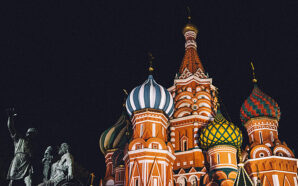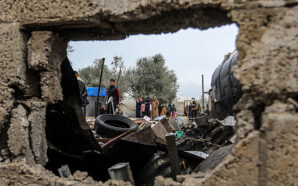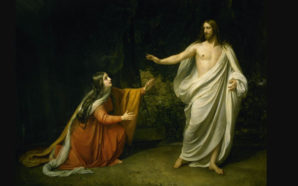Book Review: Frank O’Loughlin, New Wineskins, Coventry Press, ISBN 9780648360124
It is often said that army generals usually fight a new war with the strategies of the previous one. It takes time to learn how to respond with new weapons to a different threat. Frank O’Loughlin, theologian and Parish Priest, who has given his life to reflection and pastoral celebration of the Eucharist, believes that we are in the same situation when introducing the Eucharist to our own generation today.
The way in which preachers have presented the Eucharist derives from an earlier conflict between Catholics and Protestants. That conflict focused on the real presence of Christ in the Eucharist and on its sacrificial character. The emphasis on the reality of Christ’s presence naturally led people to see the reality of the Eucharist as hidden by the symbols of bread, wine and offering, rather than as revealed through them. In the words of the hymn, it is ‘masked by these bare shadows, shape and nothing more’.
O’Loughlin believes that in the culture of which we are part and in which the next generations are formed, this presentation of the Eucharist is disconnected from life and is unattractive. It does not commend the realities it was designed to defend. If we are to pass on our faith and Christian life today we must help people explore the symbols of the Eucharist and develop the rich meanings they have in our own culture as well as in past ones.
In exploring the symbols of the Eucharist – bread, wine, remembering, words and actions – O’Loughlin gives a thick description. He does not focus merely on bread as bread or wine as wine but reflects on all the associations that they have had in the Scriptural world and in our own.
He situates them in their different contexts as staple foods that we receive from others and rely on for survival, as central to gatherings, connection and celebration, to giving and receiving, and to conversation. Though they are simple things, the way in which they shape the simple rituals of daily life speak to us of the deep human realities of dependence, isolation and sharing, making meaning, life, death and hope, of hoarding and distribution, if we have ears to hear.
New Wineskins prepares our ears to hear, and makes it clear how the patterns of connection vary in different cultures and times. Our identity is shaped by the interlocking and forever changing network of relationships we have with one another and our environment, and symbols are nodal points in that network.
Central to the symbolic world of the sacraments is its continuity with the world of the Jews and of Jesus. In that world the symbol of bread recalled the starvation rations of an enslaved nation, the daily food of freedom when they had only enough for each day, and the hoped-for plentiful food of God’s kingdom. In the Gospels, bread and wine are the staples of life, recalling the gift of life and freedom in deliverance from Egypt, the precarious gift of life in the present, and the full life promised through the life, death and rising of Jesus. This full life was commonly described as a banquet in which food, drink and convivial company were overflowing.
For Jesus’ followers the remembering, the precarious and gifted daily reality and the promise of life embodied in bread and wine are focused through Jesus’ Last Supper which we enter in the celebration of the Eucharist. It bears the pattern of our lives as Jesus’ disciples of remembering deliverance from slavery, thankfulness for the gift of life in all its declensions and hope for the feasting promised in Jesus’ rising.
In its presentation of the Eucharist New Wineskins communicates the energy and comprehensive celebration of life that are central to it. For a short book it stirs a flock of ideas and explorations. It would be churlish to criticise it for what it does not do. Like all good books, however, it leaves the reader asking for more. I found myself musing on the inevitable gaps between reality and symbol, and particularly the ways in which all cultures symbols shape symbols to conceal as well as to disclose reality. To take one example, the reality of wine is that it is a toxic, mood altering substance with pleasant effects but naturally addictive. As symbols, however, wine and other alcoholic drinks, embellished through poetry and song, are associated with sophistication, taste and conviviality. The symbol is decorated in order to disguise and minimise the destruction of personal lives, families and social groups through alcohol addiction. The association with the sacred through the symbol of Christ’s Blood has had a part in this romancing of wine.
If we appropriate a thick description of wine as symbol, how do we reconcile the slavery to which it manifestly contributes with the freedom Christ brings? Exploring these kinds of question will take us further into the depths of love and suffering at the heart of Jesus’ death which the Eucharist makes real to us.
Fr Andrew Hamilton SJ writes for Jesuit Communications and Jesuit Social Services.








